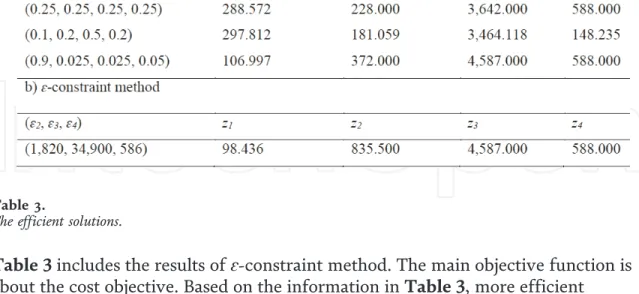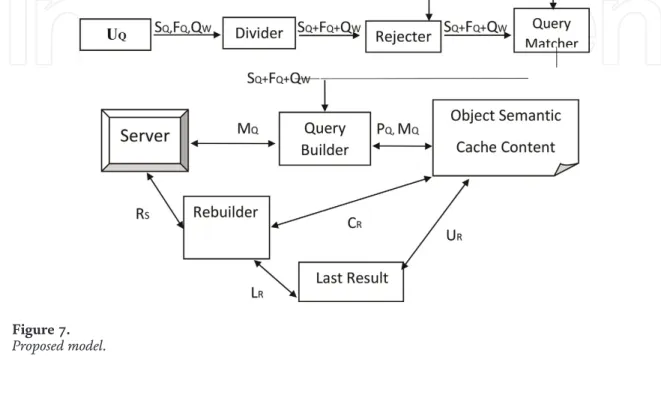As an innovative approach, a global approach of 2DCSP with a logarithmic number of binary variables and additional constraints is proposed and demonstrated. However, Vielma and Nemhauser [41] use SOS1 constraint with a logarithmic number of binary variables and constraints.

TOP 1%
A profession and a science current with an ancient history: perhaps they can help us
Although the term seems to have appeared at the end of the fifteenth century, pedagogy as a science and a profession has more than 2500 years of history, and this claim has a significant meaning since many of the conceptual and operational tools and many technical terms date back to those remote origins, as well as subsequent developments. Among the Greek-classical conceptualities of the ante litteram pedagogy, it will be enough to mention some of the most famous: ό διαλογος (the dialogue) in its two phases ή ειρωνεία; (irony) and ή μαιευτική τέχνη (the art of the midwife); γνϖθι σεαυτόν nosce te ipsum (let yourself know) and condemnation of 'ύβρις, the superior and arrogant violation of this character, tool and warning of the latter's clear momentum; πολιτέια (politics in the city-state), classical Logic and 'ρητορεία (rhetoric) and everything related to political life, the art of public speaking, of obtaining consent, of constructing well-made sentences, ή ἐτολοή ἐτιο , two different ways of talking about sciences and fields of study. Other examples of specific interest in our theme will bring us back to that historical period in their utmost importance, as we shall see.
Much of the philosophy of the Greek class, including the examples described, can be summed up on the basis of the immense scientific culture of that people: the awareness that it excited our admiration, but that it was never intended for use, although it included electricity, magnetism, the conversion of heat into mechanical energy and much more knowledge that has revolutionized human life at various times, especially in the last two to three centuries. To understand today's professional pedagogy [1, 2], it is necessary to carefully consider the historical and cultural turning point of fundamental importance, which occurred with the end of the true modern era (16th, 12th and 18th centuries, which anticipates the beginning of a certain decade) with the Enlightenment, bourgeois revolutions, the end of the modern or absolute state, the seizure of power by the bourgeoisie, and the industrial revolution and the associated enormous changes and accelerated processes.
Method issues
The components of the sample population can be properly termed "individuals". We will not detract from this method in this chapter. In this chapter we will deal with the second polarity, which is moreover the canonical methodological choice for pedagogical accompaniment, interlocution, dialogue (Socratic διάλογος but without ἀλήθεια), and more generally for the personal provision of the specific pedagogical relationship of the aid. In the use of this adjective and of the associated noun we can also recognize an etymological meaning.
In classical Greek, κλινικός was an adjective referring to an intervention on the couch (κλίνε) where the patient was; it is an intervention that is appropriate to the situation, an intervention in which the expert enters, properly and rigorously, into the context, into the environmental unpredictability, of the recipient;. The solution to the question lies in the human intervention of a qualified expert and his experience, as well as in a little-known concept, abduction.
The decision process in the pedagogical interlocution context: the abduction
Someone speaks of gambling and of guessing, and instead it is the maximum elevation of professionalism and, finally, of human mediation, of the anthropological principle. But it is also the working way of reasoning to be more subject to the risk of error. Abduction with diagnosis and choice of the general case is an important type of decision; if expressed, the translation of the previous table in terms of decision-making is immediately and clearly visible.
It could also be illustrated by logic or set theory; the negative conclusion remains: it is not true that mathematics is not an opinion. The result is an image of an open society that values experience to the extent that it is part of a very specific professional competence that is practiced and used in the interest of all.
Karl R. Popper: Logik der Forschung and open society
So many unimaginable absolutisms replace the idea of continuous inquiry, without end or τέλος, with a continuous situation of problems—questions—alternatives—moments of decision and so on, a practice of human creativity that must be faced. them with products that are always fallible both in terms of internal consistency or logic and in terms of empirical testing, what pragmatists called "future experience." Human history, neither the macrohistory nor the microhistory of each of us, has and cannot have a direction; there is no progress if it is not local and partial; rather, history, in all senses, has a verse, that of increasing entropy, that of the arrow of time, that of cultural evolution, and that for which we cannot return in the opposite direction to which we have already traveled. Be careful, we are talking about "evolution" not "progress"; the Latin etymology is illuminating.
The term "progress" comes from the Latin progredior, which means to go forward: it is the belief that humanity creates a history that is like a linear course with a predominance of improvements. The scientific contribution of Umberto Eco: the novelist semiologist Umberto Eco is known internationally primarily to the general public.
The scientific contribution of Umberto eco: a semiologist novelist Umberto Eco (1932–2016) is internationally known to the general public first
The anticipation of the Hypotheses non fingo formula by Isaac Newton in a novel set at the beginning of the fourteenth century would be excellent, but in the English translation it is not properly proved in our opinion. In the light of some inexplicable facts you must try to suggest very general laws, the relation of which to your facts escapes you. Now, for the events of the abbey I have many good hypotheses, but there is no clear fact that allows me to say which is the best.
8 At that moment I understood my master's method of reasoning, and it seemed to me quite strange to that of the philosopher, who reasons according to first principles, so that his intellect almost adopts the ways of the divine intellect. It is significant that the inspirational master and philosopher of the protagonist, Brother William of Baskerville, acute investigator and investigator, Roger Bacon, Doctor Mirabilis (1214– about 1294), also a Franciscan monk, is an empiricist.
No progress, no direction in history, and no increase in verisimilitude in scientific research, in society, and in decision-making
For our pedagogues, the only essence is man: all the rest, starting with education and pedagogy, are tools for man and humanity. From a narrow epistemological point of view, it should be added that rather than talking about truth in any way in the research process, we should talk about reality or the phenomenology of reality. Perhaps the scientific research in its historical evolutionary course comes to some extent: the phenomenology of the real, its prediction, its understanding and an interaction that can be more functional for humanity.
The person and the clinical eye
Stripped of the pretense of having some truth or of being able to overcome it or even approach it, and carefully considering the conceptuality of the person and the clinical eye, we see that to act on the person not considered and should not be considered. a limitation since it does not treat its subjects as individuals or elements. This is what gives meaning to his professionalism in the clinical eye, and what fully (or more possibly) raises the group of people who are something more and different than the sum of the characters of the individuals of a sample.
Decisions that cannot admit explicit systematic doubt and must deny fallibility
Without going into the specifics of each of these and the countless other examples that could be cited, it is clear that we are always dealing with decisions that consist of man-made, fallible and questionable hypotheses that are always and in any case doubt. The suppression or suspension of these and all other warnings, which for those with minimal scientific culture are merely formal and will never be substantive in any case, may indicate the need to confirm the decision hypothesis in the most human way. cross-checking as much as possible, incorporating different perspectives and skills, and bringing together different human, scientific, social and political perspectives as such. We can try to minimize the risk of error as far as is humanly and socially possible: but infallibility will never be possible in any human thing.
However, the reflections and considerations we could make on this subject are many and so far we have remained with the example. But the problem of the need for certainty, about decisions which, being hypotheses and human creations, cannot but be fallible, is essentially unsolved.
Toward some conclusions
Possible overall conclusions
Now ORDBMS will be converted to semantic cache and query result will be more efficient in semantic cache. Semantic cache is used to answer a query in a part like probe and rest [1]. In this regard, a semantic cache query matching technique is proposed to extract useful content from the cache to improve query response time.
In this section, we discuss our proposed approach for query matching on object-relational database query over semantic cache. And the elements present in the semantic cache are known as the regions or segments [14]. In September, the Object Database Technology Working Group of the Object Management Group (OMG) issued a white paper that introduced the concept of an "object calculus" for ODBMSs analogous to "relational calculus" in RDBMSs.
Purpose:- To improve query matching approach in ORDBMS through semantic cache. Input:- User Query, Semantic Cache.


